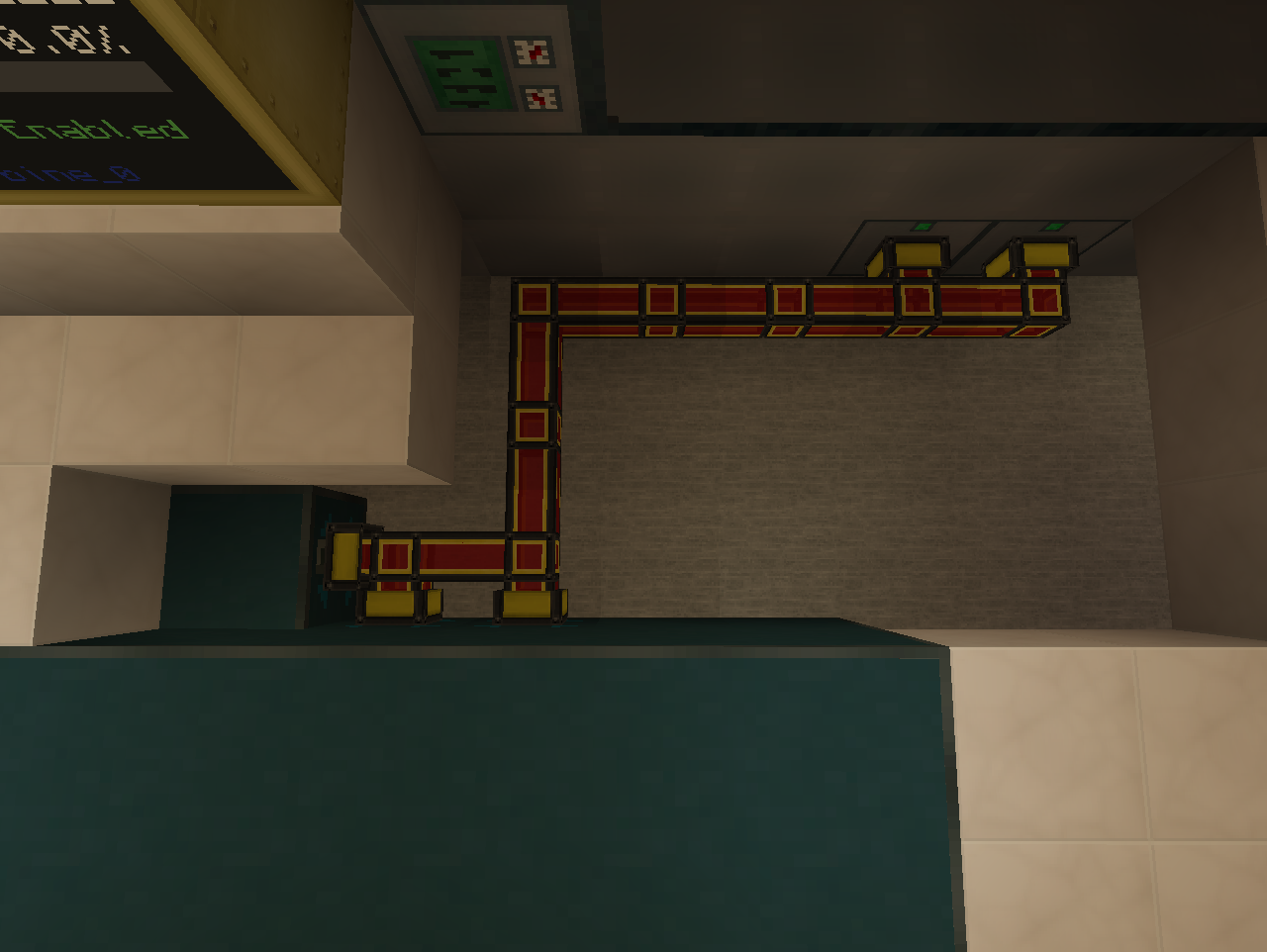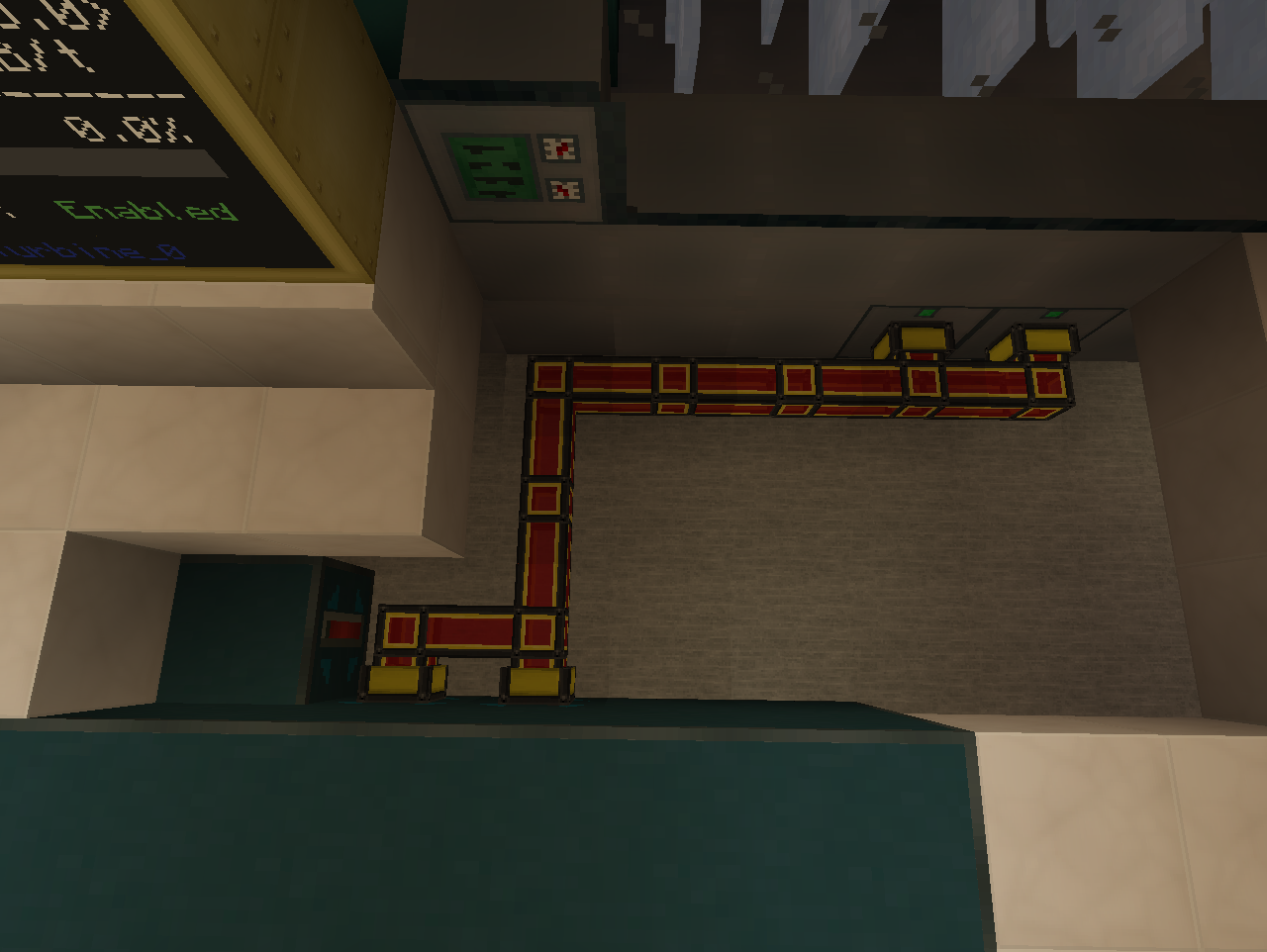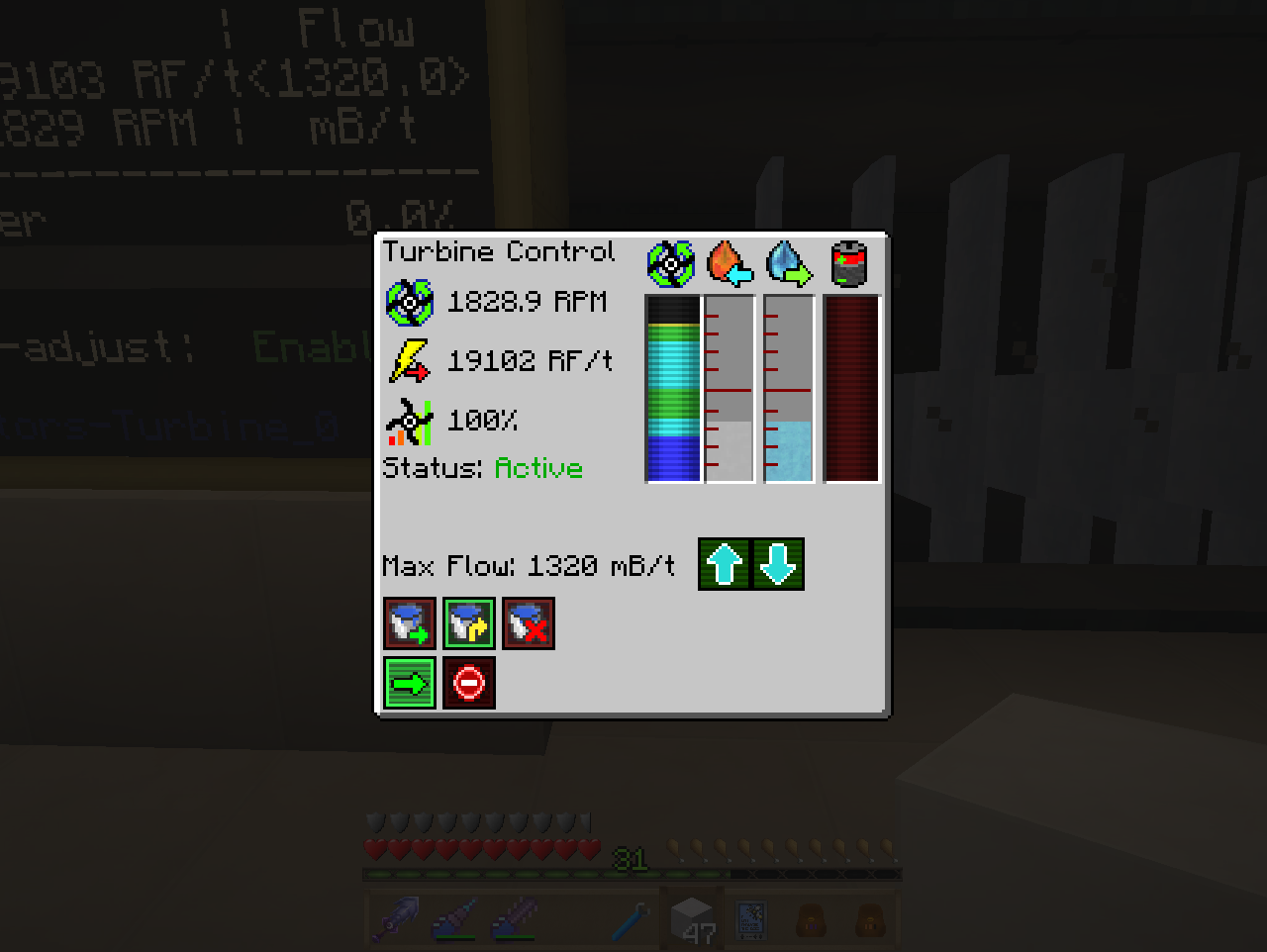What cool little thing have you discovered today?
- Thread starter malicious_bloke
- Start date
-
The FTB Forum is now read-only, and is here as an archive. To participate in our community discussions, please join our Discord! https://ftb.team/discord
You are using an out of date browser. It may not display this or other websites correctly.
You should upgrade or use an alternative browser.
You should upgrade or use an alternative browser.
Not a a cool thing. More a bug.
That when interfacing TE3 Conduits with a EnderIO Capacitor Banks inside corner(make a 90 degree angle of capacitor blocks, then hook the conduit up in the corner), the 2 connections that the conduit will form will apparently multiply the power input, so that the Capacitor Bank will receive more power than you actually produce.
Just couldn't fathom why my 19k RF/t turbine could supply enough power to run my 20k+ demand. When removing the extra connection the power consumption was instantly higher than the production as supposed to.
That when interfacing TE3 Conduits with a EnderIO Capacitor Banks inside corner(make a 90 degree angle of capacitor blocks, then hook the conduit up in the corner), the 2 connections that the conduit will form will apparently multiply the power input, so that the Capacitor Bank will receive more power than you actually produce.
Just couldn't fathom why my 19k RF/t turbine could supply enough power to run my 20k+ demand. When removing the extra connection the power consumption was instantly higher than the production as supposed to.
Dosen't sound like a bug to me. Redstone Energy Conduits (and Fluiducts too, for that matter, even back when they were Liquiducts) are- and have always been- only limited in their throughput where they connect to machines that are not conduits. So, one connection to your capacitor bank would allow the conduits to supply 10k RF/t to your demand, while two connections to the same bank would supply 20k RF/t.Not a a cool thing. More a bug.
That when interfacing TE3 Conduits with a EnderIO Capacitor Banks inside corner(make a 90 degree angle of capacitor blocks, then hook the conduit up in the corner), the 2 connections that the conduit will form will apparently multiply the power input, so that the Capacitor Bank will receive more power than you actually produce.
Just couldn't fathom why my 19k RF/t turbine could supply enough power to run my 20k+ demand. When removing the extra connection the power consumption was instantly higher than the production as supposed to.
People have always made use of this in connecting several tesseracts and energy cells in parallel, then running one single line of conduits carrying tens of thousands of RF/t or hundreds of MJ/t (back before RF) to several more machines, engines, tesseracts, or energy cells.
Same goes with Fluiducts: 9 connections to a 36HP Railcraft steam boiler, then one single line of ducts leading to a few lines of steam engines.
Also, why, exactly, is your capacitor being able to supply your demand a problem?
I know about the 10k bottleneck. That is why I had planned to have 2 connections for my 19.1k RF/t Big reactor turbine. But when I inadvertently gave it the third connection in the same block as one of the other I could see that it started inputting more than the 19k RF/t.Dosen't sound like a bug to me. Redstone Energy Conduits (and Fluiducts too, for that matter, even back when they were Liquiducts) are- and have always been- only limited in their throughput where they connect to machines that are not conduits. So, one connection to your capacitor bank would allow the conduits to supply 10k RF/t to your demand, while two connections to the same bank would supply 20k RF/t.
People have always made use of this in connecting several tesseracts and energy cells in parallel, then running one single line of conduits carrying tens of thousands of RF/t or hundreds of MJ/t (back before RF) to several more machines, engines, tesseracts, or energy cells.
Same goes with Fluiducts: 9 connections to a 36HP Railcraft steam boiler, then one single line of ducts leading to a few lines of steam engines.
Also, why, exactly, is your capacitor being able to supply your demand a problem?
Had a MFR laser drill running at full speed(capping itself out at 20k RF/t) and loads of various other random machines running, yet the Capacitor banks energy level never dropped to the level where my secondary Big Reactor reactor is set to kick in. Removing that third connection immidiately made the system make sense as in the 19k turbine could no longer keep up and the capacitor bank slowly went down until the secondary reactor kicks in(and no it didn't bottleneck the turbine as its internal buffer stayed empty at all time).
Pictures probably describe my setup easier. You can see it here:
http://forum.feed-the-beast.com/thr...nd-guide-collection.42664/page-11#post-686258
Sounds to me like the energy output and energy generation isn't synced more then anything. That is, it can output maybe 10k RF but generates 20k rf, as an example. Or it can output 15k but only makes 1k.I know about the 10k bottleneck. That is why I had planned to have 2 connections for my 19.1k RF/t Big reactor turbine. But when I inadvertently gave it the third connection in the same block as one of the other I could see that it started inputting more than the 19k RF/t.
Had a MFR laser drill running at full speed(capping itself out at 20k RF/t) and loads of various other random machines running, yet the Capacitor banks energy level never dropped to the level where my secondary Big Reactor reactor is set to kick in. Removing that third connection immidiately made the system make sense as in the 19k turbine could no longer keep up and the capacitor bank slowly went down until the secondary reactor kicks in(and no it didn't bottleneck the turbine as its internal buffer stayed empty at all time).
Pictures probably describe my setup easier. You can see it here:
http://forum.feed-the-beast.com/thr...nd-guide-collection.42664/page-11#post-686258
Right, and how exactly would that work? The turbine outputting around 21-22k RF/t over hours(days really before I found the fault), while it only produces 19.1k RF/t?Sounds to me like the energy output and energy generation isn't synced more then anything. That is, it can output maybe 10k RF but generates 20k rf, as an example. Or it can output 15k but only makes 1k.

Capacitor rapidly fills up despite 21k'ish usage and only 19k production in the turbine. Capacitor roughly fills up at 3.5k RF/t.

Capacitor bank empties fitting the approx 2k deficit between production and usage.

I really really dont see how more power could get into 2 connections on the Turbine than can get out of the 3 connections on the Capacitor bank. Not to mention outputting more power than the reactor can produce. Hence why something must be bugged with having 2 connections in one block. Maybe the Capacitor bank reads the input of both connections twice or something.
@Vazkii any thoughts because this this
Considering I was the one who posted that album, I think I've spout out all my thoughts on it.
You should be able to reproduce and test this on a tiny scale to confirm (if you're correct about the connections, the source of the power, the turbine, should be irrelevant)Right, and how exactly would that work? The turbine outputting around 21-22k RF/t over hours(days really before I found the fault), while it only produces 19.1k RF/t?
I really need to learn to readConsidering I was the one who posted that album, I think I've spout out all my thoughts on it.
Apparently someone begs to be ridiculed by the whole community...Considering I was the one who posted that album, I think I've spout out all my thoughts on it.
Lemme guess: This mod does not respect the CC BY-NC-SA license does it?Considering I was the one who posted that album, I think I've spout out all my thoughts on it.
Lemme guess: This mod does not respect the CC BY-NC-SA license does it?
It didn't when it was out, it credited me as "Vazkii: For the open source mod which I used to learn from" or something among those lines.
Regardless, that wasn't the point of the album :|
This is fantastic. I had no idea I could become a mod developer by taking a mod and changing its name.Considering I was the one who posted that album, I think I've spout out all my thoughts on it.
#GiveMeModDeveloperTitlePlease
Today, playing my Monster world, I learned that Magic Crops essence dust doesn't work in a Cyclic Assembler, the Weak Infusion Stone gets "eaten" or destroyed.
Confirmed via googling other reports. AE auto-crafting uses the stone properly and doesn't consume it, so AE is the answer. AE is always the answer. To everything. I humbly bow down and worship the almighty Colin.
Confirmed via googling other reports. AE auto-crafting uses the stone properly and doesn't consume it, so AE is the answer. AE is always the answer. To everything. I humbly bow down and worship the almighty Colin.
Typing "/dragonapi" gives you Reika's manual for free.
The manual is an enchanted book, which, according to NEI, can be used in the crafting of magical wood. I wonder how many?
Currently untested... but kinda OP. =P
The manual is an enchanted book, which, according to NEI, can be used in the crafting of magical wood. I wonder how many?
Currently untested... but kinda OP. =P
I know about the 10k bottleneck. That is why I had planned to have 2 connections for my 19.1k RF/t Big reactor turbine. But when I inadvertently gave it the third connection in the same block as one of the other I could see that it started inputting more than the 19k RF/t
If your output is 19k, you can just drop that section of redstone conduit for enderIO ender conduits. Yeah you don't get the technically infinite power load but the 10k connection bottleneck suddenly becomes 20k
For parallel outputs from a bank of energy storage blocks i'd keep the TE3 conduits though.
Yeah I know, just didnt have the EnderIO conduits production automated at the time so just ran dual REC connections instead.If your output is 19k, you can just drop that section of redstone conduit for enderIO ender conduits. Yeah you don't get the technically infinite power load but the 10k connection bottleneck suddenly becomes 20k
For parallel outputs from a bank of energy storage blocks i'd keep the TE3 conduits though.
And yeah the output of the Capacitor bank is a REC with something like 8+ connections to match the capacitors throughput limits. Was reluctant to use EnderIO conduits for this and my major usage network as I cant seem to find any information on if the EnderIO conduits are limited per connection or per actual conduit.
As far as the 1.6 version is concerned, it's almost certainly still a per-connection limit, as per issue #540 of github/CrazyPants/EnderIO. He does mention changing things around, though, so all bets are off of how they are currently.Yeah I know, just didnt have the EnderIO conduits production automated at the time so just ran dual REC connections instead.
And yeah the output of the Capacitor bank is a REC with something like 8+ connections to match the capacitors throughput limits. Was reluctant to use EnderIO conduits for this and my major usage network as I cant seem to find any information on if the EnderIO conduits are limited per connection or per actual conduit.
...I guess I could peek at the code. I mean, it's *right there*.